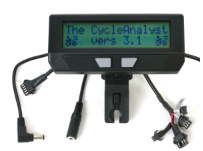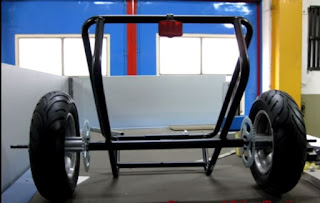NEVER USE CABLE PULL BRAKES ON HEAVY BIKES unless they are really good ones not like all the GD things under $100@......
Paul Comp makes a good cable pull disc brake (worth every cent): If you find something better let me know.https://www.paulcomp.com/shop/components/brakes/disc-brakes/i-s-klamper/
What to look for in heavy duty bike that can replace a car
• Don't listen to what sellers tell you, they have no idea and want your money.
• Don't waste your money on aluminum bikes! Aluminum will break!
• Don't get a large wheel bike. Small wheels are like lower gears needed for hill climbing. What to look for:
• 20inch drive wheel with a mid-drive motor of at least 750watts, anything less is a waste of money. Planetary gears are the most affordable. Hub motors need more power to climb steep hills than Mid-drive motors.
• Large steel rack built into the frame.
• Front rack attached to the frame not the front fork! [You don't want to swing heavy cargo around, it will affect the steering].
• Thick 2.25” wide tires like motorcycle tires are 4-ply while bicycle tires are only 1-ply.
• 16” motorcycle tires [measured at the rim] fit on a 20”BMX rim [that hold 20”O.D. bicycle tires] and cost half the price of bicycle tires. These Bias ply 4-layer tires that are rated "L" (for75mph) are very heavy duty with very thick side walls that can hold up your bike with no air in the tube. Do not ever use a Radial tire they are made for speed and nothing else. If you build your own bike make the rear forks wide enough for 2.75" or 3" wide tires.
• Find the right battery before the bike to make sure it can fit.
• Best rule of thumb I have seen for choosing a battery is: “If your motor can run at 30amps continuous without over heating then get a 30amp-hour pack at least 48 volts.
• Higher voltage battery packs hold more amp hours than are told on the spec sheet.
• The distance depends on the total combined weight and hills and whether or not you can pedal what you are carrying. Ask people about their experience in your area.
• Trailers. The trusty old B.O.B. trailer I have had for many years is ok but not always big enough. And fully loaded it is hard to backup.
• Two wheel trailers could be better if you can find a heavy duty one.
• Disc brakes are essential to stay alive hauling 400lbs total combined weight down a 16% grade or steeper. If the breaks are out of adjustment, you have no stopping power. Test your breaks before starting down hill. Some Hydraulic disc brakes adjust them self's. But are expensive as hell. So I am going to try out new type that is actuated with a cable pull.
• Bigger 180mm rotor and steel pads [color coded dark blue] rather than organic pads will help a lot. Some even have air cooling fins, only good for long down hill runs. But a double piston sets [four pads] or look for calipers that use extra wide brake pads, If you need to ride in the rain.
• But the best breaks could be DRUM breaks that are water resistant. But these do not come with a lot of bearings in the hub. Once again amerikan bike racing industry destroys the potentiality of high-quality utility bikes.
• HUBs with more than the usual amount of bearings helps the bike last longer. Don't even think about wasting your money on hubs with so called sealed bearings that are actually open bearing cups with a rubber seal that does not work as well as they claim. People used to have to re-grease their bearings often and buy new cheap hubs when the ball race wore out. But now most bikes use machine bearings. [Called “sealed cartridges” in the idiot bicycle industry] Don't waste your money on an “entry level” bike.
• Front hub: Look for a 'trial' [not trails] bike disc hub with larger bearings. Trial bikes are BMX made for jumping.
- For electric bikes you need a voltmeter to tell you if you have enough power left in your battery.
- And an Amp meter to tell you if you are draining your battery too fast. (That is the easiest way to kill a battery pack, by fire!)
Warning! Do not ever even think about those wimpy “extender cogs” [correctly known as rear sprockets; free wheels] I had one and after climbing a steep hill the chain warped the big sprocket and tore apart the derailleur. All because they are not made for motor powered vehicles.
Start with a fat tire bike that has 4 inch tires on a 406mm rim called a 20 inch bicycle wheel, then replace them with 3 inch motorcycle tires heavy duty knobby or street motorcycle tires. And learn how to build a strong spoked wheel.
https://www.youtube.com/watch?v=BFGcOmHdUVY
Electric Mini Bike | Super Bike Power – DJ Bikes US (dj-ebikes.com)
.jpg)





















































